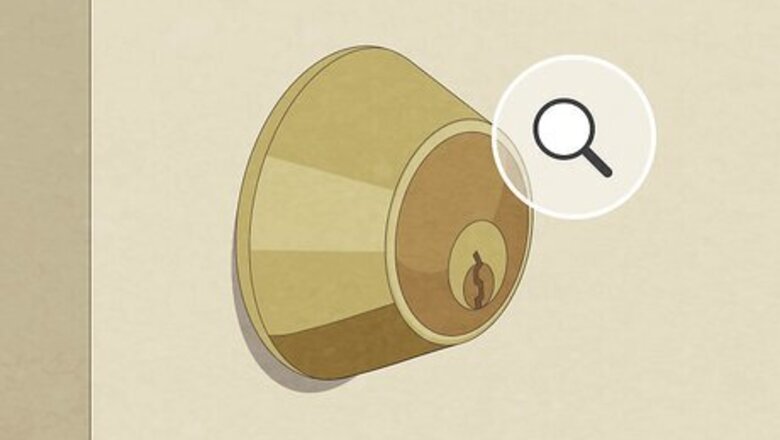
views
- Drill into the lock just above the keyhole. The goal is the drill through all of the pins inside the lock cylinder.
- Go slow, and whenever the drill bit gets stuck, switch to the next size up and keep going.
- After you drill through the pins, insert a flathead screwdriver into the keyhole and twist it to unlock the door.
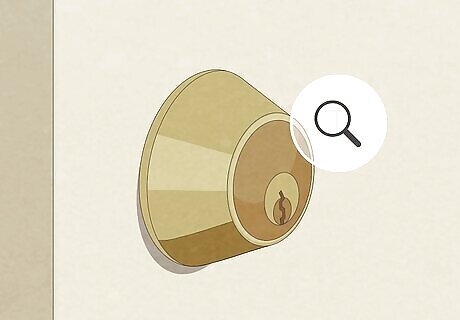
Confirm the lock can be drilled out by looking at it. The only locks you can drill out are the doorknob locks and deadbolts with traditional tumblers. Tubular locks, ceramic locks, smart locks, cam locks, and mortise locks can only be drilled out or disassembled by locksmiths. Basically, if the keyhole isn’t set in a circular metal platform and the key isn’t a “normal” key, you must break the lock to open the door. It's also important to double-check and make sure that you're working with a basic tumbler lock that you'll be able to knock out. Trying to drill out a non-tumbler lock may destroy your door, drill bit, drill, or lock mechanism and make it even harder to get in. If you’re struggling to picture what kind of lock you can drill out, just imagine any interior door in a standard home. Those kinds of knob locks and deadbolts can be drilled out.
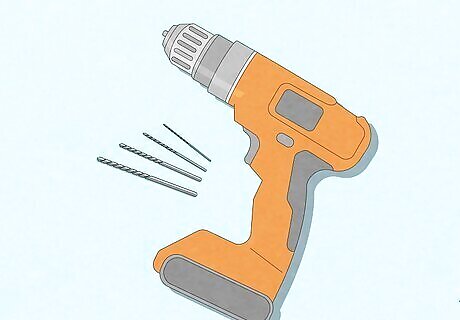
Acquire a drill and different sizes of drill bits. Any type of drill bit should work, but steel, black oxide, and titanium drill bits will work best. To drill through a lock, you need: A power drill. Multiple drill bits. A center punch and hammer. This is optional, but it will help a lot if you have one. Protective eyewear (to keep shards of metal out of your eyes).
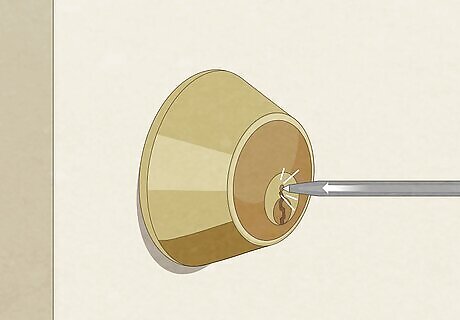
Hammer a center punch directly above the keyhole (optional). If you don’t have the steadiest hands with a drill, punch a divot just barely above the keyhole’s shear line to guide your drill. The shear line is where the pins enter the lock’s opening to meet the key’s ridges, so if the lock is installed where the key’s ridges point up when you open it, put the center punch just above the top of the opening. Some locks are installed upside down. If the key would go into the keyhole with the ridges pointing down, set the center punch guide hole on the bottom.
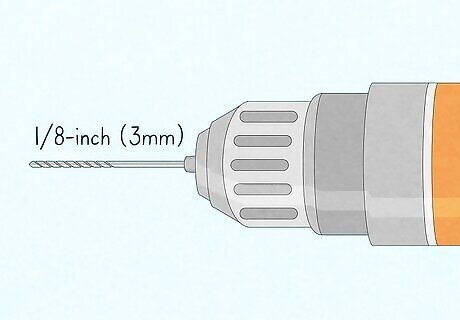
Attach a 1/8-inch (3mm) drill bit to your drill. If you don't have a bit that size, go with something in the neighborhood. So long as the bit is roughly as big as the widest part of the keyhole, it will work.
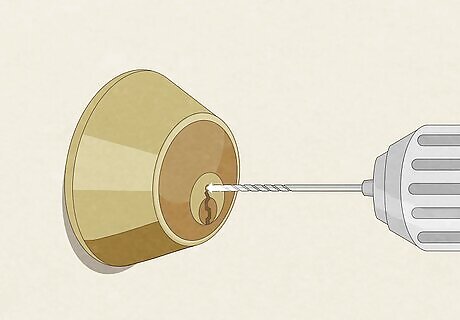
Drive the drill bit slowly into the lock above the keyhole. Hold the drill straight and go slow. The goal here is to destroy the pins inside the lock cylinder which allows you to force the lock open. Most locks have about five tumbler pins to drill through, although some have six or more. You’ll feel more resistance as the drill bit encounters each pin. That’s completely normal.
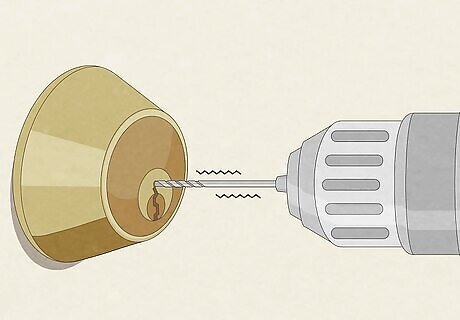
Go slowly and stop once your drill bit starts spinning. Don’t try to drive through the entire lock all at once. You’re just going to break the drill bit if you force it too hard. Feel the drill work and stop once it gets stuck or starts spinning in place. Keep the drill level while drilling. If you drill at an angle, you can accidentally drill through unnecessary metal and your door.
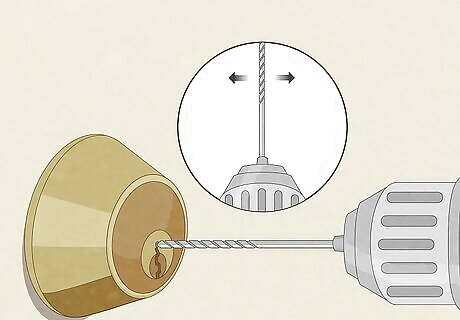
Switch to a slightly larger bit when the small bit gets stuck. After going through with your smaller bit, take it up a notch. Attach a 1/4-inch (6.5mm) or larger drill bit to your drill, and go through the lock again with the larger bit to break up the pins more and open the lock. It normally only takes 2 drill bits to get through a traditional lock, but use a third bit that’s even bigger if your second bit gets caught.
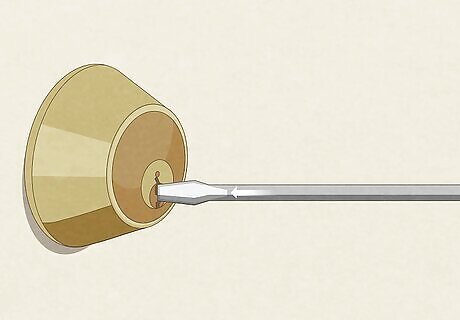
Insert a flat-headed screwdriver into the lock. Use a little bit of force to insert the screwdriver into the key hole (not the hole you drilled). Turn the lock in the same direction you would with a key. If the drilling worked, the lock will turn and the door will open.
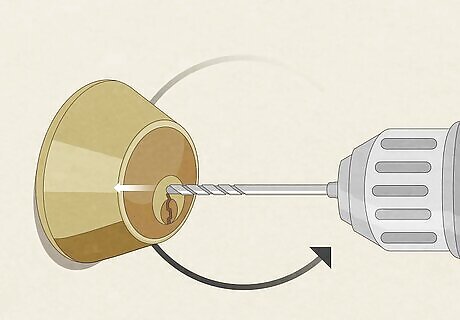
Continue drilling and testing the screwdriver if the door won’t open. It’s possible you didn’t drill through all of the tumblers in the lock if it won’t open. Switch to a larger 3/4 inch (19 mm) drill bit and repeat the process. Keep using larger bits and your flathead until the door opens. If you still can’t get the lock to open, contact a locksmith. There may be an anti-drill plate installed behind the tumblers that you can’t see keeping you from opening the door.













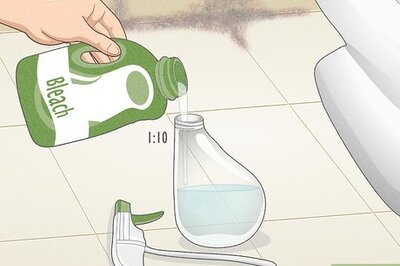





Comments
0 comment